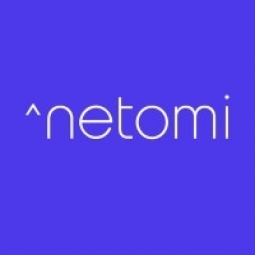技术
- 网络与连接 - NFC
- 平台即服务 (PaaS) - 应用开发平台
适用行业
- 电子商务
关于客户
EBANX 是一家总部位于巴西的公司,帮助 Spotify、Uber 和 SHEIN 等跨国公司通过本地化支付平台覆盖拉丁美洲 15 多个国家/地区。该公司是该地区顶级的在线支付平台,在多个国家拥有自己的法规和货币的高度分散的支付环境中促进支付。随着该地区电子商务的快速增长,EBANX 的商户基础也在快速增长,导致客户支持请求数量大幅增加。
挑战
拉丁美洲的数字化和电子商务繁荣给 EBANX 带来了重大挑战,EBANX 是一家总部位于巴西的公司,为该地区的跨国公司提供便利的支付服务。随着公司的商业基础迅速扩大,客户成功和支持团队努力跟上增长的步伐。聊天、电子邮件和语音消息中的客户支持票证数量达到每月约 55,000 个。 EBANX 团队发现维持响应时间越来越困难,导致客户支持聊天室中的队列数量比平时要多。由于客服人员缺乏及时响应,这导致客户经常放弃会话。面临的挑战是确保支持团队的平等增长和可扩展性,以最好地服务于用户和新兴市场。
解决方案
为了应对在快速增长的同时扩展客户支持的挑战,EBANX 推出了 Buddy,这是 Netomi 开发的人工智能聊天机器人。 Buddy 于 2021 年 8 月推出,最初在巴西推出,然后扩展到其他八个拉丁美洲国家。该聊天机器人旨在提供统一且有凝聚力的解决方案,以支持拉丁美洲电子商务和 EBANX 自身业务的快速增长。 Buddy 每月能够解决 30,000 个问题单,自动化处理了收到的近一半的问题单。这显着减少了客户支持团队的工作量,使他们能够专注于需要人工干预的更复杂的问题。
运营影响
数量效益

Case Study missing?
Start adding your own!
Register with your work email and create a new case study profile for your business.
相关案例.

Case Study
Digital Transformation of Atlanta Grout & Tile: An IoT Case Study
Atlanta Grout & Tile, a Tile, Stone & Grout restoration company based in Woodstock, Georgia, was facing challenges with its traditional business model. Despite steady growth over the years, the company was falling behind the web revolution and missing out on the opportunity to tap into a new consumer base. They were using independent software from different vendors for each of their department information and workforce management. This resulted in a lot of manual work on excel and the need to export/import data between different systems. This not only increased overhead costs but also slowed down their response to clients. The company also had to prepare numerous reports manually and lacked access to customer trends for effective business decision-making.

Case Study
IFFCO Boosts IT Performance and Innovates Agriculture with Oracle Cloud
Indian Farmers Fertiliser Cooperative Ltd. (IFFCO), the world’s largest manufacturer and marketer of fertilizers in the cooperative sector, was facing several challenges in its quest to innovate and improve the livelihood of farmers in India. The organization had recently launched a new product, nano urea, which brought new demands to IFFCO’s cloud computing needs. The organization needed a reliable cloud vendor to support the processes of 6–7 new manufacturing plants during the upcoming year, enhancing its production capability 300–350 million bottles of nano urea to meet increasing demand. IFFCO’s cloud adoption was driven by a need to innovate. The organization wanted capabilities for a dynamic business that can adapt to the changing needs of the market while growing fast. However, it was inhibited by rigid on-premises data center deployments and the overhead of maintaining legacy systems. IFFCO wanted to apply the elasticity and availability of cloud for improving overall performance of applications at lowest possible operational overhead. Lastly, IFFCO needed to provide the benefits of its technology to all its stakeholders, including employees, members, transporters, and farmers, some of whom have limited literacy. To accommodate all stakeholders, IFFCO wanted to add a voice interface to its applications.
Case Study
7-Eleven Philippines Enhances Customer Support with Freshdesk
7-Eleven Philippines, a pioneer of 24-hour convenience stores in the country, was facing challenges with its customer support system. The customer support was outsourced to an external vendor, which resulted in limited visibility into customer query patterns and performance metrics. The company had no transparency into the vendor's analytics and could not validate their reports. They also had no visibility into the volume of calls, number of abandoned calls, etc. due to the use of the vendor’s telephony solution. This lack of control and visibility into customer support led the team to decide to bring the entire function in-house. They began exploring helpdesk solutions that would enable them to build a strong in-house support team.
Case Study
Kaafmeem Enhances Customer Operations with Freshchat and WhatsApp Integration
KaafMeem, a Saudi-based fashion e-commerce company, was facing challenges in its customer service operations. The company, which specializes in modern Arabic fashion, had traditionally used email and direct calls to handle sales queries, delivery information requests, and questions about refunds and replacements. However, they wanted to provide a more user-friendly channel for their customers to immediately access the Kaafmeem team. They were looking for a solution that would allow them to open a direct dialogue with their consumers, making the shopping experience as seamless and convenient as possible. The challenge was to find a platform that was popular among their customer base and could be integrated easily into their existing operations.
Case Study
Software Development Partnership with PrettyLittleThing: Enhancing E-commerce Capabilities
PrettyLittleThing, a rapidly growing UK-based fashion retailer, faced the challenge of expanding its software development capabilities to keep up with its business growth. The company needed a strategic tech partner who could assemble a team of dedicated software engineers with experience in developing e-commerce solutions and high load systems. The primary goals were to extend the in-house team with strong software engineers experienced in PHP, various JavaScript frameworks, AWS, and other technologies; automate the process of product creation on the client’s e-commerce website that has over 30,000 items; and speed up the software development process. The challenges included establishing effective communication and alignment among different distributed teams and developing functionality that helps manage thousands of products easily.
Case Study
Aramex Boosts Agent Productivity by 50% with Freshservice Implementation
Aramex, an international express, mail delivery, and logistics services company based in Dubai, was facing challenges in delivering consistent, quality IT services and support to its employees. As the organization grew, responding to service requests in a timely manner became increasingly difficult due to outdated processes and communication silos. Aramex was using an in-house legacy IT service desk that was rigid, ill-defined, and required constant resources to maintain and upgrade. The on-premise system was not easy to scale and could not keep up with the growing needs of Aramex. The company was in need of a flexible, agile IT service desk that could streamline its workflow and improve ticket resolution time.



